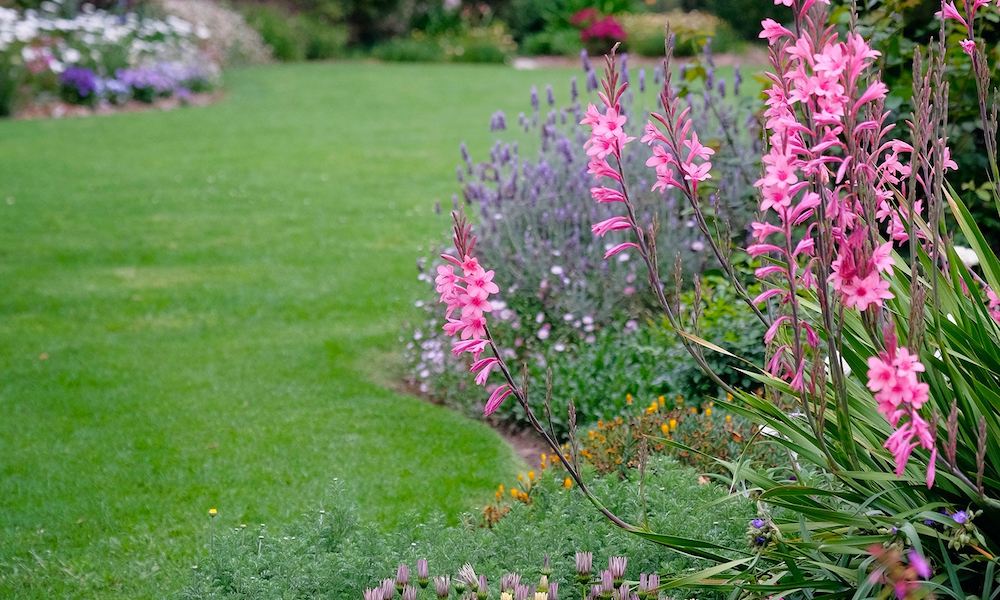
- Categories: LAWN CARE
Summer Lawn Fertilising
Start the summer with a hit of fertiliser to give it the boost it needs to look its best throughout the hot months ahead.
A granule-based slow-release fertiliser that contains nitrogen, potassium, phosphorous and potassium, such as Grech’s Top Turf Fertiliser or Sir Walter Fertiliser, will get it looking green and lush while encouraging strong root growth.
Remember to water-in the fertiliser after you’ve applied it so you don’t burn the lawn.
If you’ve had a lot of rain in the preceeding season, you might consider fertilising at a higher dosage than the recommended rate to compensate for any nutrients which have been washed out of the soil.
If you’re not sure, apply the higher dosage first to a test area to see whether it performs any better in the following weeks.
If it’s looking a lot greener and healthier than the area with the regular dose, then you can apply some extra all over.
Lawn Grubs
During the first half of summer you should consider applying some Lawn Solutions Grub Guard to your lawn to prevent moths and other insects from laying their eggs in your lawn – these are commonly referred to as lawn grubs.
Without some preventative action, later in summer and thru autumn you may see some areas of your lawn looking dead where Lawn Grubs are actively feeding on the roots of the lawn in that area.
If you do get a bad case of grubs, they can do a lot of damage and quite quickly.
While Lawn Solutions Grub Guard can help to halt an attack, prevention is better than cure!
Summer Lawn Mowing
Summer is when your lawn will likely grow pretty quickly because of the extra sunlight. This is particularly true if you are watering or enjoying regular rain.
Because you should not cut more than 1/3rd off your lawn blades at any one time, mowing the lawn every week is the best way to keep it from getting too long.
If you have let it go a bit long, take 1/3rd off, then give it a few days to recover before taking another 1/3rd off. This will prevent the lawn getting stressed and thinned-out.
Try not to mow too low, or you’ll encourage weeds to grow and the soil to dry out, which will mean you have to water more frequently.
If your lawn seems to have white tips after you’ve mown, it’s time to give your mower blades a sharpen. The white tips are where the lawn has been ripped rather than cut!
Summer Lawn Watering
Depending where you live, some amount of watering is probably going to be needed. We suggest you do it once a week, and water deeply when you do.
This encourages the roots of your lawn to go deeper for water which will stand it in good stead during the hot and dry spells.
If you feel like your lawn really needs more watering than this to keep it looking good, you might consider applying a wetting agent.
Some soils (especially sandy ones) can be ‘hydrophobic’ and not hold water well.
Applying the wetting agent e.g. Lawn Lovers Lawn Soaker, is easy as clipping on the handy applicator bottle to your hose and spraying onto the lawn.
Summer Lawn Weeds
Because your lawn should grow nice and thick in summer, weeds shouldn’t be too much of a problem.
But if you do seem to have some stubborn ones left over from the cooler months, apply some weed killer such as Lawn Lovers Buffalo Weed Control to get rid of them.
Autumn Lawn Care – March To May
Fertilise In Autumn
Autumn is an important season for lawn care, because it’s when you’ll prepare the lawn for the rigors of winter.
Like in the Summer, it’s a good idea to start Autumn with a hit of fertiliser to get the lawn as healthy as possible while it’s still growing.
Don’t leave fertilising too late when the soil starts to cool and the lawn stops growing, or it won’t be of much help.
If you are unfortunate enough to get a case of grubs during autumn, remember to fertilise that area afterward to help it recover as quickly as possible.
Lawn Aeration
If you’ve had a lot of rain, or there’s a part of you lawn that gets heavy foot traffic, you might find that the soil in that area gets compacted.
This will make it hard for the grass to grow well in this area because the roots can’t breathe.
The way to fix it is to get some spiked aerator sandals and have a good tromp about the affected area.
If your soil has some clay in it, it will be more prone to compaction and it would be a good idea to add some lime and gypsum after aeration to prevent the problem recurring.
Mowing In Autumn
You’ll be able to reduce the frequency of your mowing in Autumn as the lawn will stop growing as quickly.
It’s also a good idea to start allowing your lawn to get a bit longer, so as it’s got good blade length for maximum photosynthesis when the days are shorter.
Preventing Wintergrass
If you’ve had some wintergrass in the year previous, you need to get on top of it early this year because the seeds will be laying dormant in your soil getting ready to resurge with a vengeance this year.
Don’t wait till winter, or it’ll be too late! At the start of April, you should treat the grass with some wintergrass weed killer which should ward it off for the year.
Winter Lawn Care
The main issue in winter is weeds. These take hold in winter because your lawn will be thinner and less able to out-compete them.
The only thing you can do to prevent a bad weed season is to get on top of your fertilising it Autumn, so that the lawn is as healthy as possible during winter.
From that point, weeding can be done in different ways depending on the type of week you’re trying to eradicate. See our article on Lawn Weeds.
Spring Lawn Care
During spring, your lawn should start growing again, so if it seems a little slow to get going, check that the lawn has not become compacted (most frequent in clay-based soils) and in need of aerating and treatment with gypsum and lime as mentioned above.
Or if you have sandy soil, you should check whether it’s holding enough moisture and if not, apply a wetting agent.
Fertilising In Spring
If the weather in your locality is a still quite cool, fertilising in early spring is best done with some liquid fertiliser, such as Seasol, which is a seaweed-based natural fertiliser that can be applied all year round.
This will give the lawn a kickstart after the dormant winter months.
Or if your area enjoys warmer temperatures, a granular fertiliser should be applied – these types rely on bacteria in the soil to break down the nutrients in the fertiliser, which is activated by warmer temperatures.







